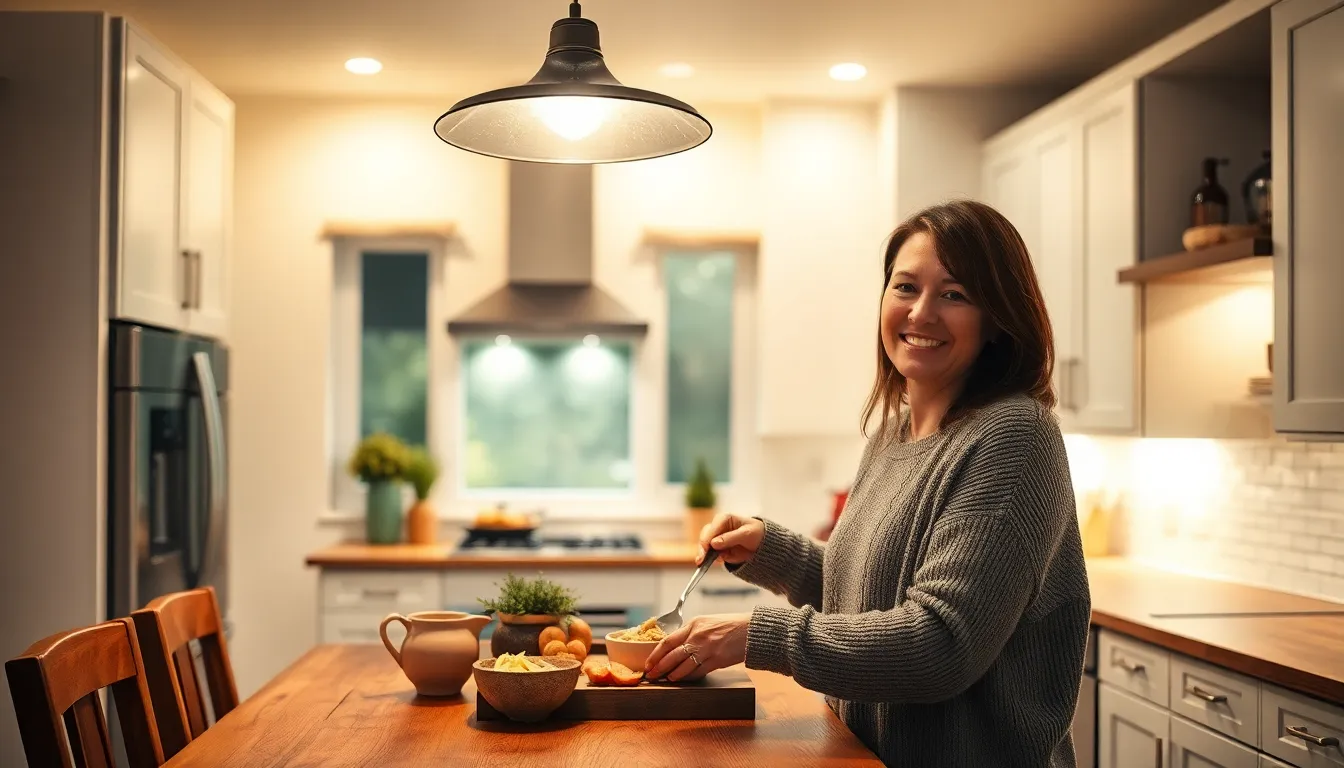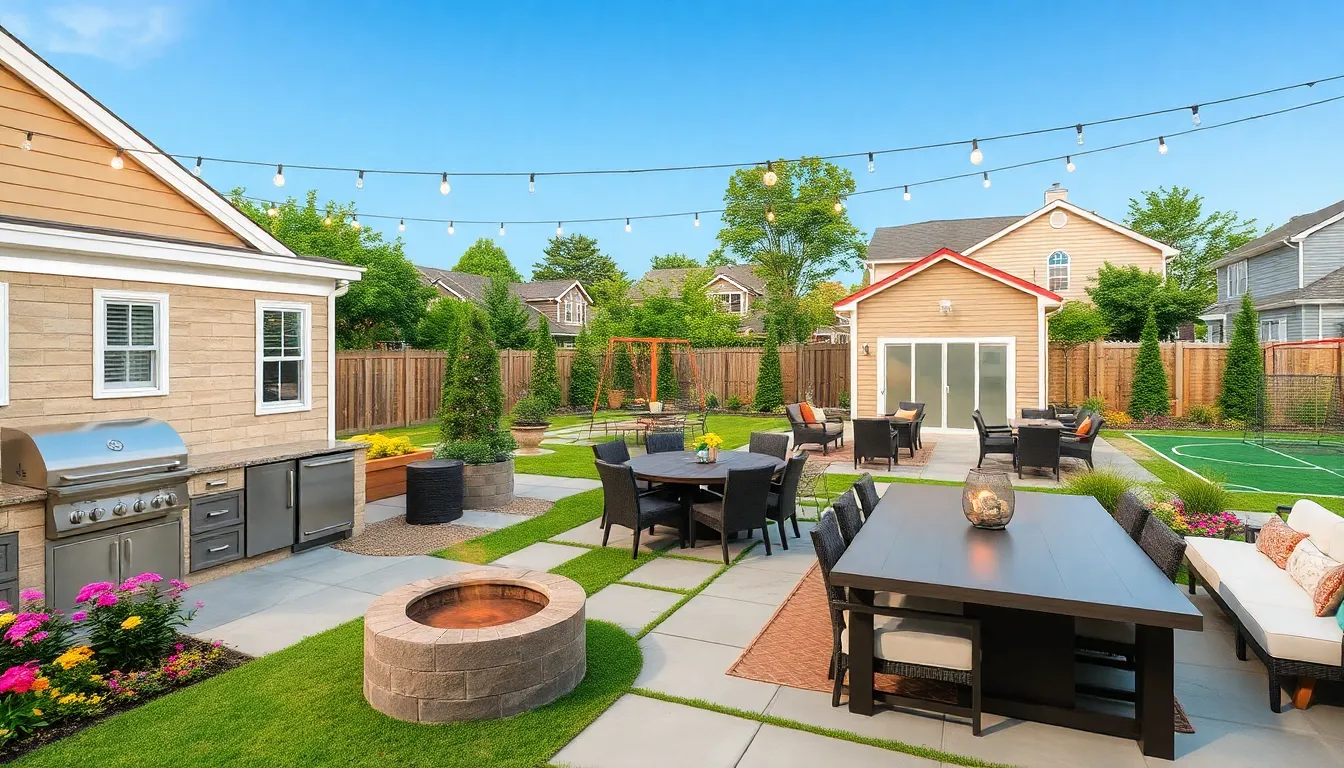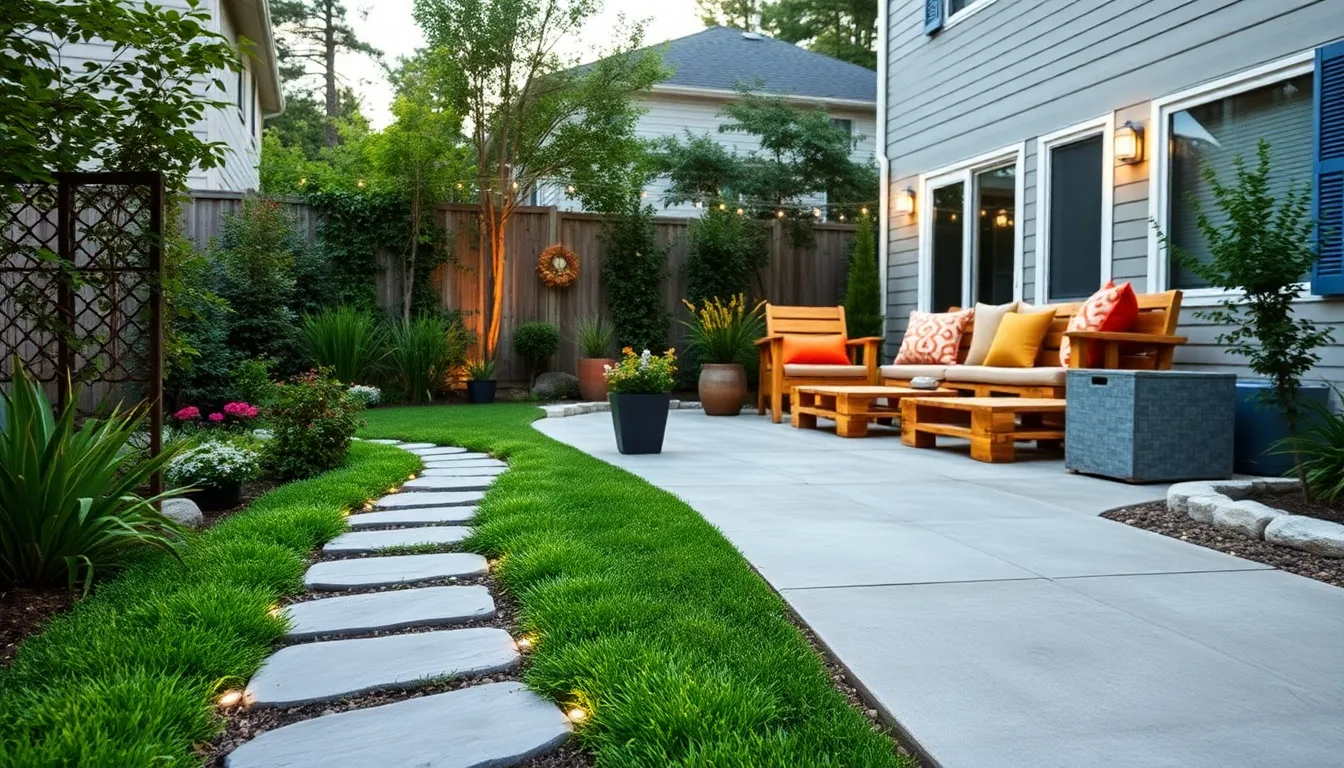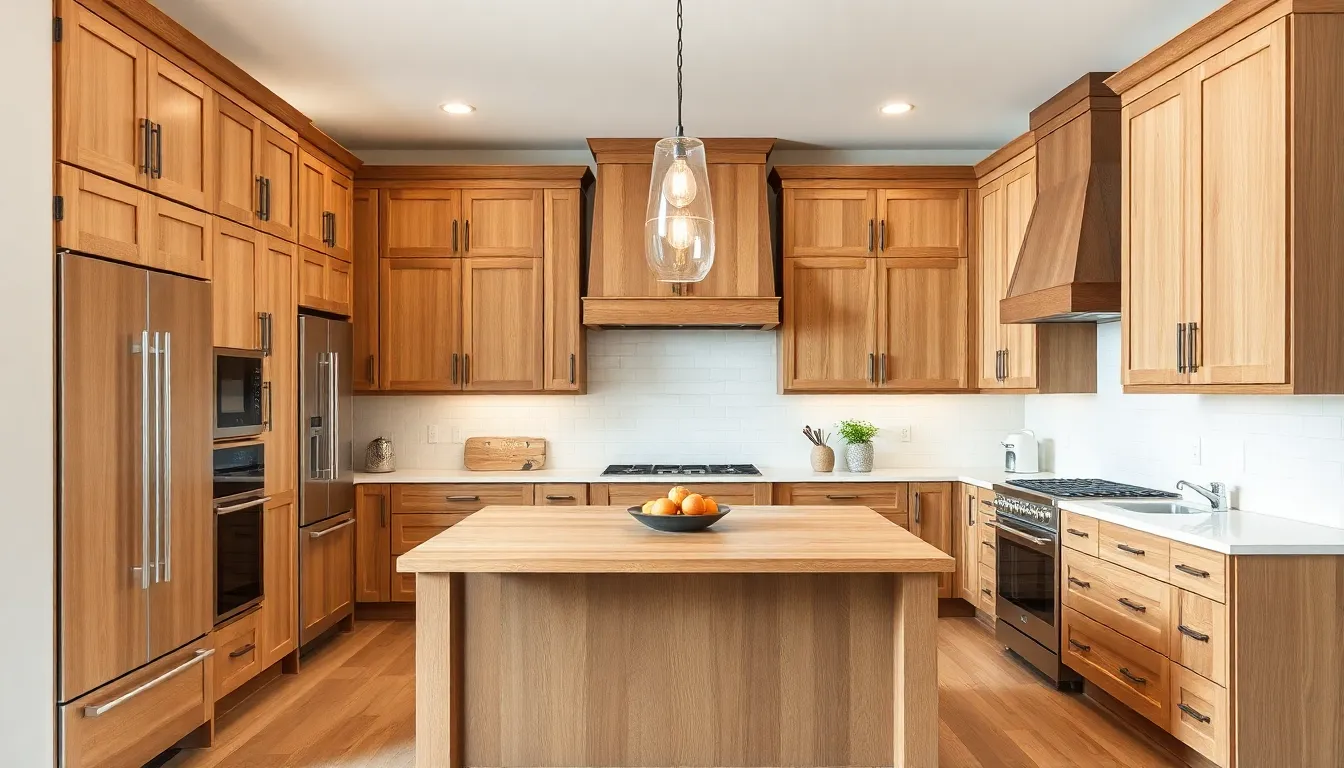Table of Contents
ToggleIn a small kitchen, lighting can make all the difference between a cozy culinary haven and a shadowy corner of despair. With limited space, choosing the right lighting isn’t just about visibility; it’s about creating an inviting atmosphere that makes even the simplest meal feel like a gourmet experience. Who knew that a well-placed pendant light could turn chopping onions into a scene from a cooking show?
Importance Of Good Lighting In Small Kitchens
Good lighting plays a crucial role in small kitchens. It transforms a gloomy space into a warm, inviting area. Bright, well-distributed light enhances visibility, making cooking and meal prep easier. The right lighting can elevate the overall cooking experience, bringing joy to even basic tasks.
Task lighting is essential in small kitchens. Focused lights above the stove or countertop reduce shadows and improve efficiency. Ambient lighting creates a cozy atmosphere, encouraging gatherings and making the kitchen the heart of the home.
Consider adding dimmers for flexibility. Dimming options allow for a change in mood, whether it’s a lively dinner party or a quiet meal. The use of layered lighting increases functionality, highlighting specific areas while maintaining overall brightness.
Utilizing wall sconces or under-cabinet lighting creates depth and dimension. These options free up counter space and prevent clutter, essential in small areas. Pendant lights offer visual interest while providing direct illumination, enhancing the kitchen’s aesthetic appeal.
Thoughtful lighting design improves both functionality and ambiance. It’s an essential factor in transforming small kitchens into inviting, practical spaces.
Types Of Small Kitchen Lighting Ideas
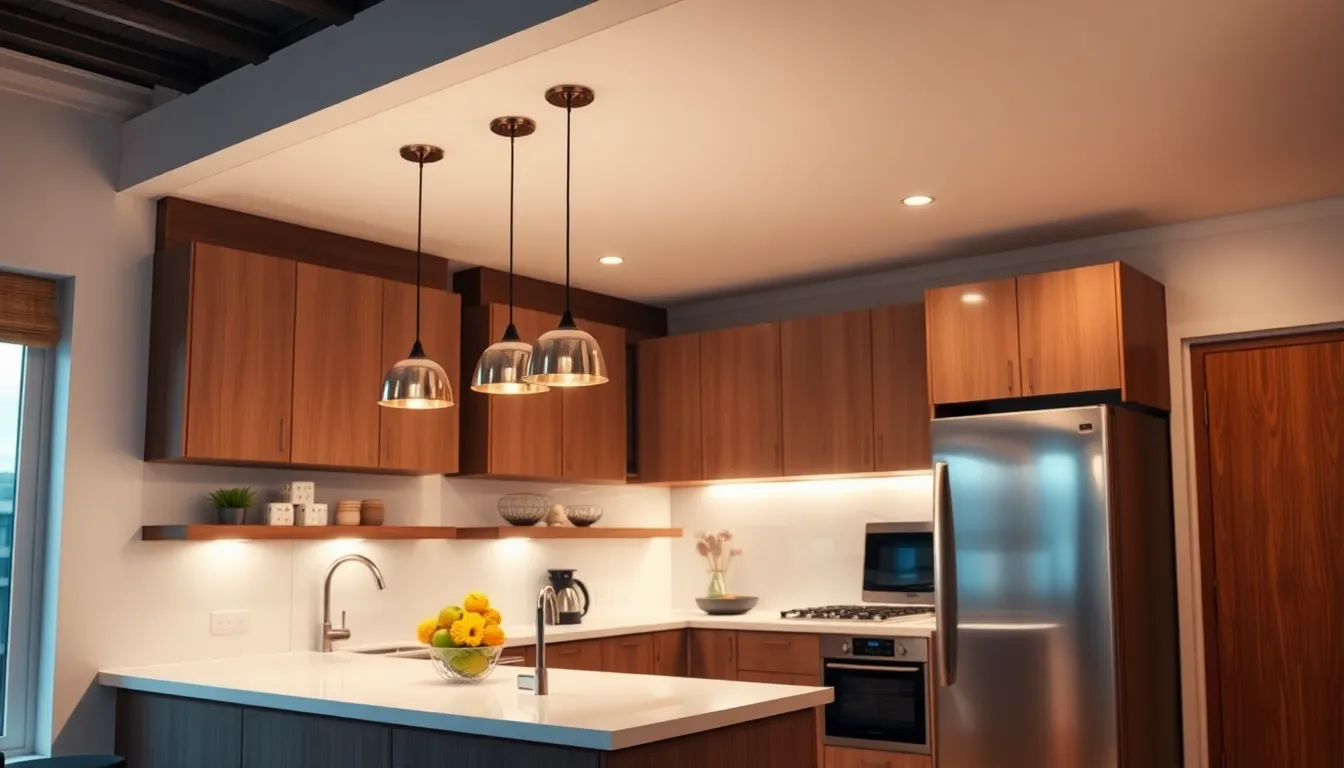
Selecting the right types of lighting enhances both functionality and atmosphere in small kitchens. A combination of ambient, task, and accent lighting creates a well-rounded design.
Ambient Lighting
Ambient lighting serves as the foundation of kitchen illumination, ensuring the space feels inviting. Ceiling-mounted fixtures like flush mounts or chandeliers provide broad light coverage. Recessed lighting offers a sleek look while illuminating the entire kitchen. Dimmer switches can adjust brightness levels, creating a warm, cozy environment. Natural light from windows or skylights adds to the ambiance, brightening up the space during the day. Incorporating layered ambient lighting creates a visually appealing atmosphere that draws people in.
Task Lighting
Task lighting focuses on specific areas where activities occur, enhancing visibility and efficiency. Under-cabinet lights illuminate countertops, making food prep safer and easier. Pendant lights above kitchen islands offer direct illumination for cooking and meal preparation. A well-placed light over the stove ensures clarity while cooking. Adjustable fixtures lend flexibility, allowing for optimal positioning based on tasks. Highlighting work zones improves overall functionality and creates a safer cooking environment.
Accent Lighting
Accent lighting adds depth and personality to small kitchens, emphasizing features or decor. Wall sconces can draw attention to artwork or cabinetry while enhancing the overall design. LED strips can be added inside cabinets or above shelves to highlight glassware or decorative items. Creative use of colored lights creates dynamic visual interest, especially in modern kitchen designs. Incorporating accent lighting introduces layers to the kitchen’s look, elevating it from ordinary to extraordinary. Integrating these fixtures enhances both aesthetics and functionality.
Creative Small Kitchen Lighting Solutions
Small kitchens benefit significantly from creative lighting solutions. Thoughtful designs can enhance functionality while adding visual appeal.
Pendant Lights
Pendant lights serve as stylish focal points, bringing character to the space. Low-hanging options create an inviting atmosphere above kitchen islands or dining areas. Choosing multiple pendants in varying heights can enhance visual interest. Selecting fixtures with different shapes or colors adds personality to the kitchen. Ideally, bulbs should provide warm light to create a cozy ambiance.
Under-Cabinet Lighting
Under-cabinet lighting provides essential task illumination. Lights positioned beneath cabinets effectively illuminate countertops and workspaces. LED strips are popular choices, as they are energy-efficient and unobtrusive. With easy installation, these options create a seamless look while enhancing visibility. Incorporating motion sensors allows for more convenience, turning lights on when someone approaches.
Wall Sconces
Wall sconces add elegance while saving counter space. These fixtures can highlight specific design elements or create a warm glow. Placing sconces near seating areas ensures optimal lighting for dining or conversation. Choosing adjustable sconces enables flexibility in light direction, allowing focused illumination. Selecting designs that complement kitchen decor ties the look together cohesively.
Tips For Choosing The Right Lighting
Choosing the right lighting for a small kitchen involves consideration of various factors. Assessing the size and layout of the kitchen influences decisions about fixture types and placements. Ceiling-mounted fixtures provide essential ambient lighting, ensuring a well-lit environment. Under-cabinet lights offer direct task illumination, ideal for countertops and work areas while blending seamlessly into the design.
Layering lighting enhances functionality and ambiance. Combining ambient, task, and accent lighting creates a versatile space. Accent lighting, such as wall sconces or LED strips, draws attention to unique features and adds personality. Experimenting with dimmers accommodates mood variations, allowing flexibility based on activities.
Selecting fixtures that match the kitchen’s style enhances visual appeal. Pendant lights can serve as striking focal points when hung at varying heights. Additionally, choosing energy-efficient options, like LED bulbs, reduces energy costs while providing effective illumination. Focus on maximizing natural light during the day by opting for sheer window treatments.
Prioritizing installation methods impacts overall functionality. Flush mounts work well in low ceilings, while taller spaces may accommodate larger fixtures. Positions of lighting fixtures should eliminate shadows, particularly above workspaces. It’s crucial to avoid overcrowding with too many styles, ensuring a cohesive look throughout the kitchen.
Evaluating personal cooking habits aids in determining necessary task lighting. Understanding these routines allows for strategic placements that enhance efficiency. Prioritize practicality alongside aesthetics to create a balanced and inviting environment.
Lighting plays a pivotal role in shaping the atmosphere of small kitchens. By carefully selecting and layering different types of lighting, anyone can create a space that feels both functional and inviting. Whether it’s through the strategic placement of pendant lights or the subtle glow of under-cabinet fixtures, the right choices can elevate the kitchen experience.
Incorporating a mix of ambient, task, and accent lighting not only enhances visibility but also adds personality to the space. With thoughtful design and attention to detail, small kitchens can become warm and welcoming areas that inspire creativity and comfort. Embracing these lighting ideas can truly transform how one interacts with their kitchen daily.

